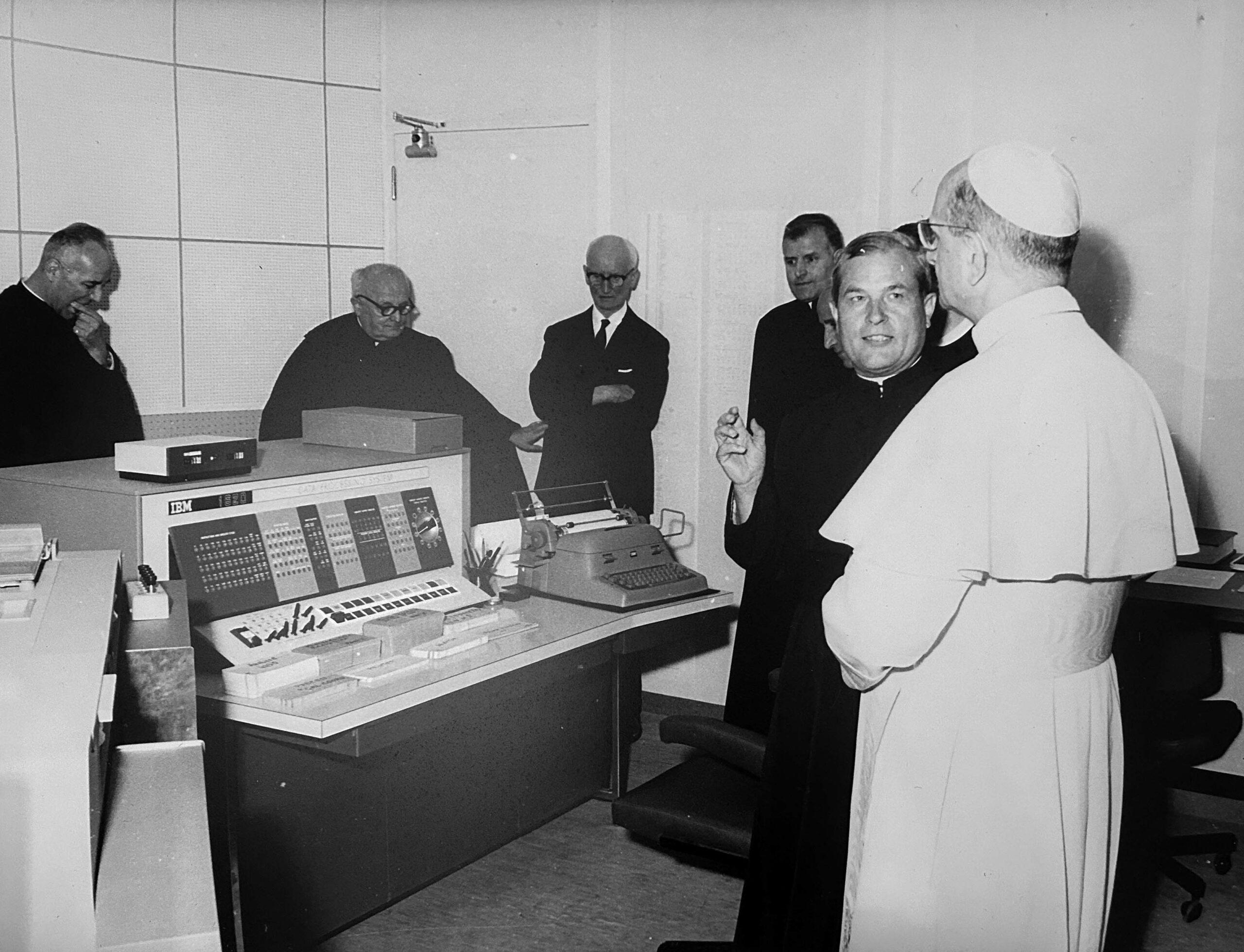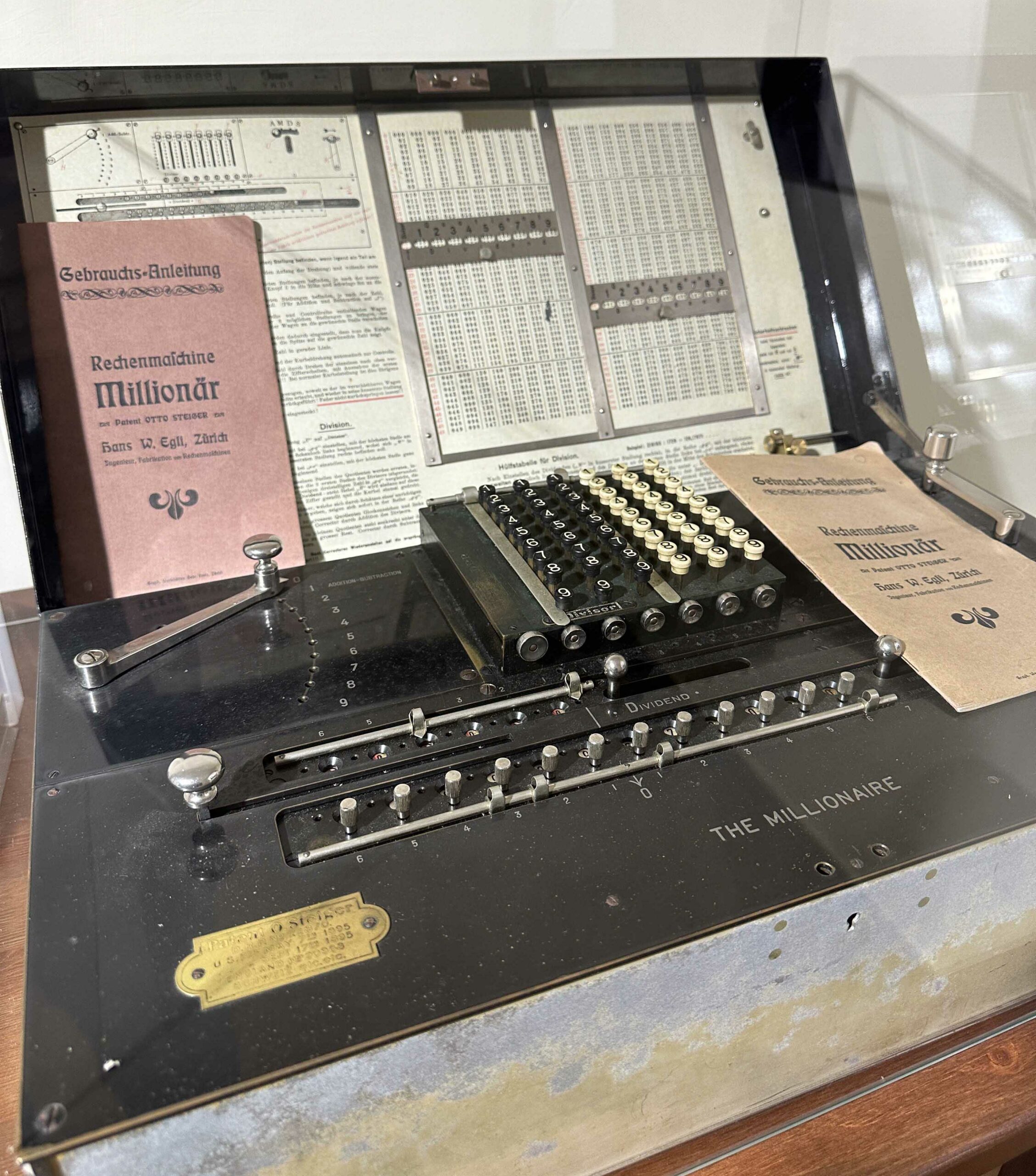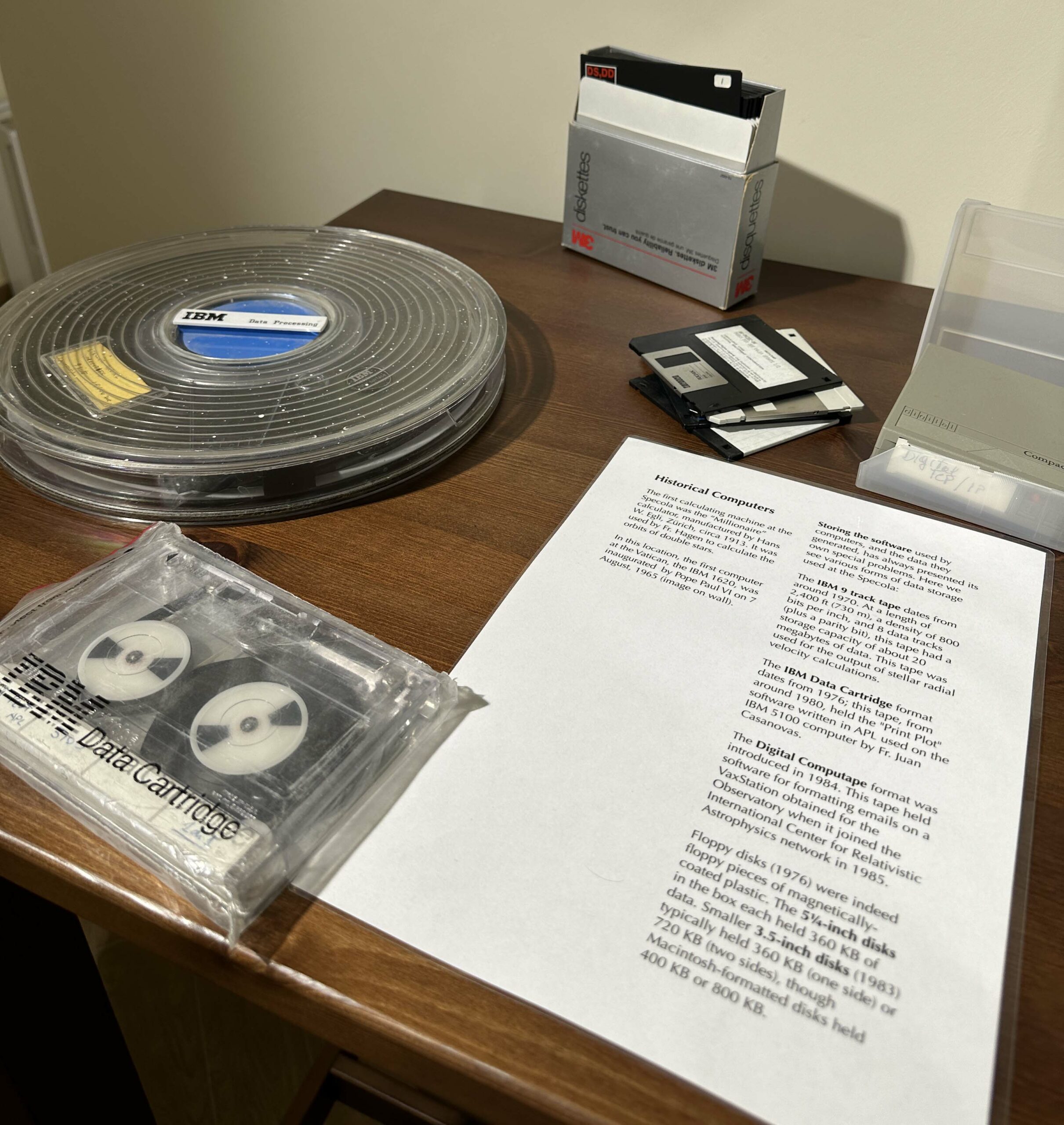
Historical Computers

In this location, the first computer at the Vatican, the IBM 1620, was inaugurated by Pope Paul VI on 7 August, 1965 (image on wall).

The first calculating machine at the Specola was the “Millionaire” calculator, manufactured by Hans W. Egli, Zürich, circa 1913. It was used by Fr. Hagen to calculate the orbits of double stars.

Storing the software used by computers, and the data they generated, has always presented its own special problems. Here we see various forms of data storage used at the Specola:
- The IBM 9 track tape dates from around 1970. At a length of 2,400 ft (730 m), a density of 800 bits per inch, and 8 data tracks (plus a parity bit), this tape had a storage capacity of about 20 megabytes of data. This tape was used for the output of stellar radial velocity calculations.
- The IBM Data Cartridge format dates from 1976; this tape, from around 1980, held the “Print Plot” software written in APL used on the IBM 5100 computer by Fr. Juan Casanovas.
- The Digital Computape format was introduced in 1984. This tape held software for formatting emails on a VaxStation obtained for the Observatory when it joined the International Center for Relativistic Astrophysics network in 1985.
- Floppy disks (1976) were indeed floppy pieces of magnetically-coated plastic. The 5¼-inch disks in the box each held 360 KB of data. Smaller 3.5-inch disks (1983) typically held 360 KB (one side) or 720 KB (two sides), though Macintosh-formatted disks held 400 KB or 800 KB.
